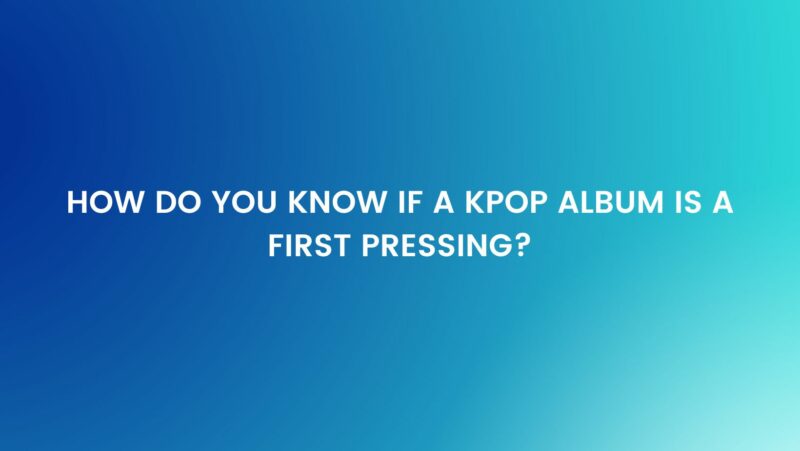In the world of K-Pop, where music meets artistry, collecting albums is not just about the music; it’s about owning a piece of your favorite artists’ journey. Among K-Pop enthusiasts and collectors, the distinction between first pressings and subsequent releases carries significant weight. In this comprehensive guide, we will unravel the mystery of identifying a first pressing of a K-Pop album, providing you with the tools and knowledge to ensure you add a prized piece to your collection.
Understanding First Pressing in K-Pop
A “first pressing” of a K-Pop album refers to the initial manufacturing run when the album is first released to the public. It represents the album’s debut in its original form, untouched by subsequent reissues or modifications. A first pressing often holds sentimental and collectible value for fans and collectors alike.
Key Elements for Identifying a First Pressing of a K-Pop Album
- Catalog Number:
- The catalog number is a crucial indicator of a K-Pop album’s pressing. First pressings often have unique catalog numbers or codes specific to that initial release. These numbers are assigned by the record label and can vary from one edition to another.
- Release Date:
- Research the official release date of the K-Pop album. The first pressing is, by definition, the first release, so its date should coincide with the album’s initial debut. Later reissues or reprints will have different release dates.
- Packaging and Photobook:
- Pay close attention to the album’s packaging and photobook. Some first pressings may have special packaging or unique features not present in later versions. This could include exclusive photo cards, posters, or other collectible items.
- Contents and Tracks:
- Check the tracklist and contents of the album. In some cases, first pressings may include bonus tracks or hidden songs not found in later pressings.
- Label and Distributor:
- Examine the record label and distributor information on the album packaging. Sometimes, first pressings are distributed by different companies or have specific labels that distinguish them from reissues.
- Limited Edition Stickers or Markings:
- Look for stickers, markings, or seals on the album cover or shrink wrap. Some first pressings may have limited edition stickers or marks indicating their status as initial releases.
- Comparison with Official Sources:
- Cross-reference the information you gather with official sources such as the artist’s website, fan forums, or dedicated K-Pop collector websites. These sources often provide details about first pressings and their distinguishing features.
- Disc Color or Design:
- Occasionally, first pressings may have unique disc colors or designs. While this is not a foolproof method, it can be an additional clue to identify an original pressing.
Consulting Experts and Collectors
If you’re uncertain about the authenticity of a K-Pop album’s first pressing, consider reaching out to experienced K-Pop collectors or enthusiasts. Online forums, collector communities, and social media groups dedicated to K-Pop can provide valuable insights and guidance.
Conclusion
Identifying a first pressing of a K-Pop album is a rewarding endeavor that allows fans and collectors to connect with the artist’s debut and original vision. By examining elements such as catalog numbers, packaging, release dates, contents, labels, and consulting reliable sources, you can confidently determine whether an album is indeed a first pressing. The thrill of owning a piece of K-Pop history and music in its original form is a unique experience that adds depth to your collection and appreciation for the artists you love.


